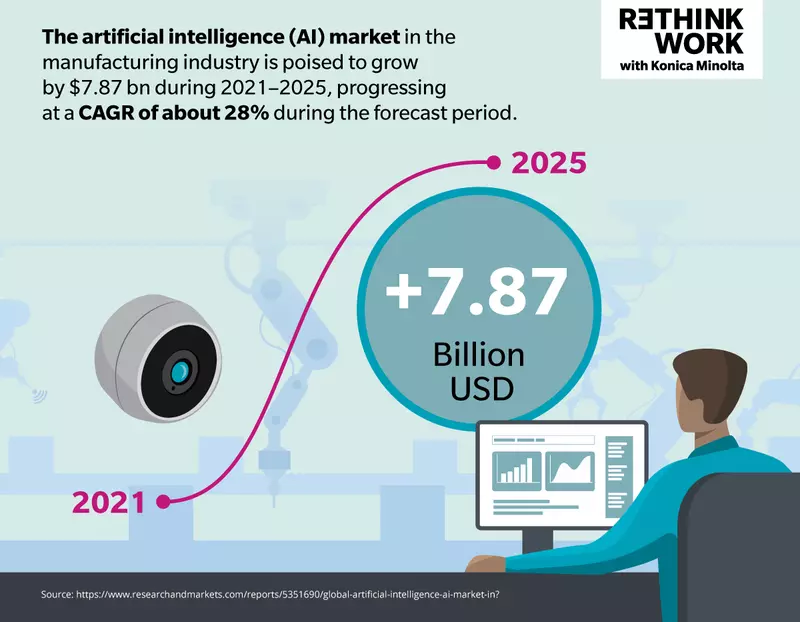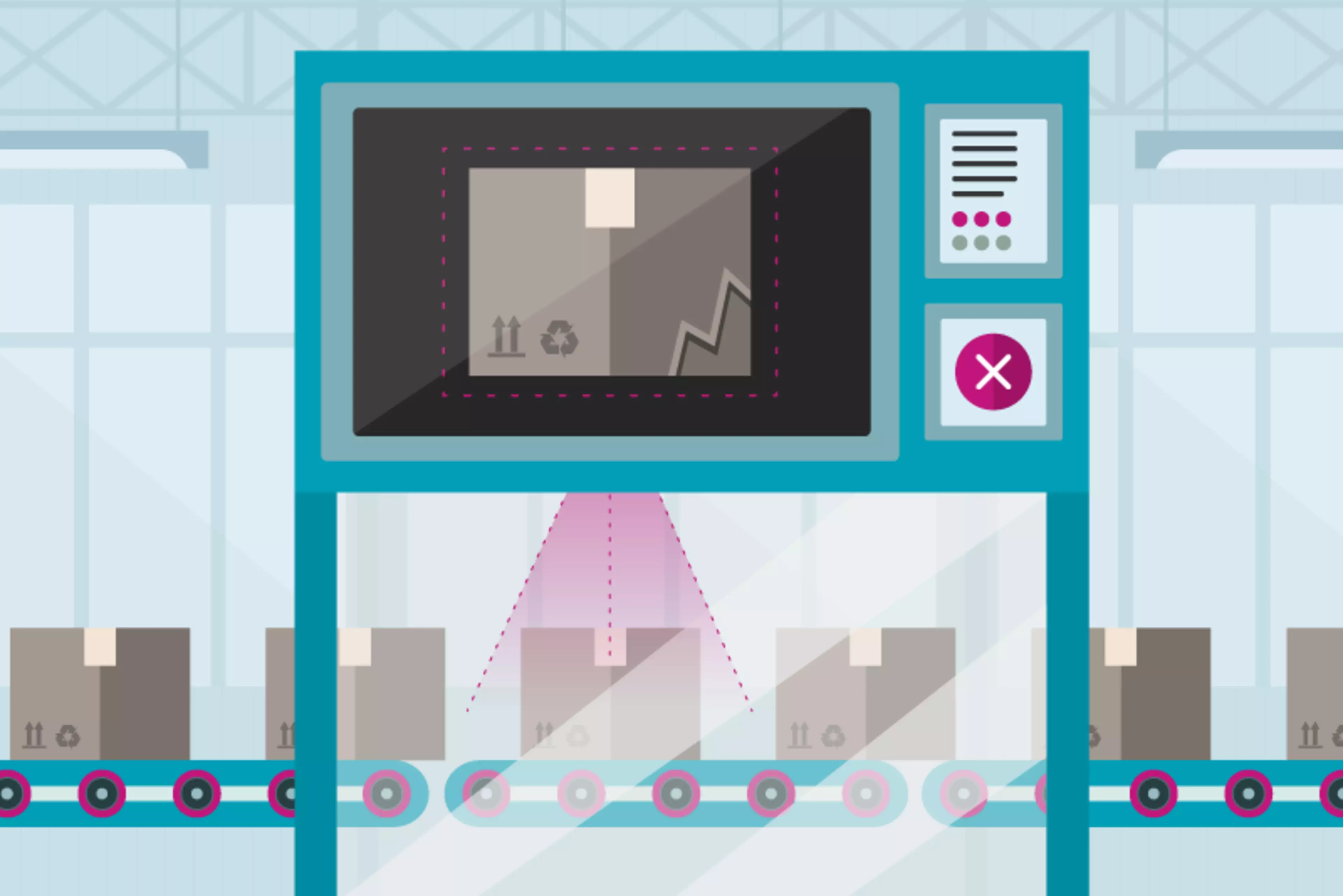Industry 4.0 technology for digital transformation has traditionally required considerable investment, making it the preserve of major manufacturers. Now that’s changing, with the development of affordable technology solutions like video analytics for quality inspection. Such solutions are helping to level the playing field, allowing smaller companies to take advantage of efficiency improvements and related benefits.
Major factory, manufacturing and engineering players are already investing in Industry 4.0 technologies – such as artificial intelligence (AI), the Industrial IoT, machine learning (ML) and robotics – to transform to digital manufacturing processes and build the smart factories of the future.
For many smaller companies, however, the level of technology investment required for this degree of digital transformation has traditionally been out of reach – leaving them struggling to keep up and stay competitive. But just like the bigger players, these smaller firms remain focused on improving their manufacturing and engineering processes, in order to:
- Enhance efficiencies by increasing automation
- Reduce mistakes, errors and inconsistencies
- Reduce downtime
- Lower their costs
What is Industry 4.0?
Industry 4.0, also known as the fourth industrial revolution, is the ongoing transformation and digitisation of manufacturing, industrial and supply chain practices using big data, data analytics, the industrial internet, IoT-enabled devices (like smart sensors) and digital tools and technology to drive:
- Increased automation
- Improved connectivity and communication
- Self-monitoring
- Analysis and diagnosis of issues without the need for human intervention
A factory, manufacturing or engineering company that incorporates Industry 4.0 technologies into its processes can, for example, enable mass production of higher-quality products at lower cost. Removing human error through automation and deriving actionable insights from production line data are critical to enhancing productivity and quality in an Industry 4.0 manufacturing context – both of which are supported by the video quality inspection solutions discussed in this article.
Exchange human error for digital consistency
Companies strive to ensure the highest level of quality at every stage of the manufacturing, production or assembly process. Anomalies – such as poorly made parts, damaged items, or the presence of foreign objects – can lead to a range of issues, such as
- Production slowdowns
- Poor-quality final products
- Costly and time-consuming reworking
- Environmental or safety hazards
- Increased production costs
In many cases, identifying anomalies before they cause problems depends on visual quality inspections, which will generally be carried out by human inspectors. The nature of the process will govern what inspectors are looking for. For example, they may be inspecting:
- Paper, fabric or metal surfaces – are they smooth and free of defects?
- Parts or containers – are any damaged, imperfect or contaminated?
- Screws, nuts and bolts – are they all present, and have they been correctly inserted?
Of course, like anyone performing a repetitive task, a person performing visual inspections may become tired, bored or distracted; or may only be able to inspect every 10th or 20th item in a high-speed process.
But as production and related processes become more complex – and customers more demanding – companies urgently need to find a way to reduce the potential for human error in quality inspections, and ensure nothing escapes the inspection process.
In our previous blog , we discussed how video analytics software solutions – which combine smart cameras with AI – can be used to monitor workplaces and send alerts when workers’ health or safety may be at risk.
Now, similar video analytics solutions can be used to automate visual quality inspections, performing them more efficiently and consistently than people, and setting you on the path towards zero-defect production.
And when you make video analytics part of your migration towards digital manufacturing and automated processes, there are plenty of additional benefits on offer, including:
- Increased productivity and lower production costs, with more predictable production and a higher standard of quality
- The potential for round-the-clock operations
- Lower HR costs, as there’s no need to hire and train inspectors
Crucially, you can also collect visual quality inspection data. As well as enabling real-time monitoring and benchmarking, this data can be analysed over the longer term to support decision-making, production planning, and process improvements.

Kick-start your digital transformation with AI-based visual quality inspection
Konica Minolta has developed an intelligent Visual Quality Inspection (VQI) solution that’s based on AI and smart video cameras, and incorporates machine vision and deep learning to automate critical visual inspection processes. Our VQI solution:
- Enables identification and enumeration of anomalies such as defects, foreign objects, and contaminations
- Rates the severity of any identified anomaly and directs the appropriate action
- Can recognise different products by checking for barcodes or labels
- Is easy to monitor using a real-time dashboard that also provides long-term statistics
We work with our customers individually to understand their processes and pain points, and adapt and customise our solution to the task in hand. Our VQI solution can be used across manufacturing, logistics, warehousing and other industries for applications such as visual inventory inspections, process inspections, quality inspections and quality control.
Box defect detection enhances customer satisfaction in pharmaceutical logistics
Pharmaceutical logistics companies use reusable plastic boxes to deliver products to pharmacies. If a customer returns the products because of damaged or dirty shipping boxes, it can be expensive for the logistics company.
A number of pharma logistics companies in Europe, including Phoenix in the Czech Republic, use our VQI solution to resolve this challenge. The software solution inspects the shipping boxes in the production line for defects and dirt. It commands the separator to remove defective boxes from the line or to send dirty boxes for immediate washing. Using our VQI solution in this way significantly reduces the risk of customers returning products because of damaged or dirty boxes.
Continuous surface inspection prevents costly printer downtime
For our customer, an industrial printing company, paper quality issues meant it sometimes had to halt its rotary heatset presses. The lengthy restart process led to machine downtime that the company could ill afford.
Now the printing company uses our VQI solution to inspect the paper and identify wrinkles, tears, foreign bodies and other defects. The solution immediately notifies the press operators of any identified defects, enabling them to take action and preventing the need to stop the presses. In addition, the VQI solution provides the company with the data it needs to accurately report defects to the paper producer, which pays compensation for defective deliveries.
Ready to join the fourth industrial revolution?
An intelligent visual quality inspection solution – tailored to your company’s needs – can help you increase the quality, efficiency and predictability of your production, logistics or other industrial process. As well as delivering more accurate, consistent inspection outcomes than human inspectors can achieve, it will set you on the path towards automation and digitisation of your operations.
Find out more about how Konica Minolta’s Visual Quality Inspection solution can help your company start its Industry 4.0 transformation.




